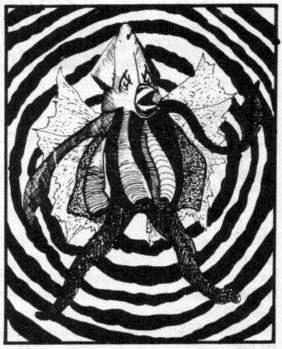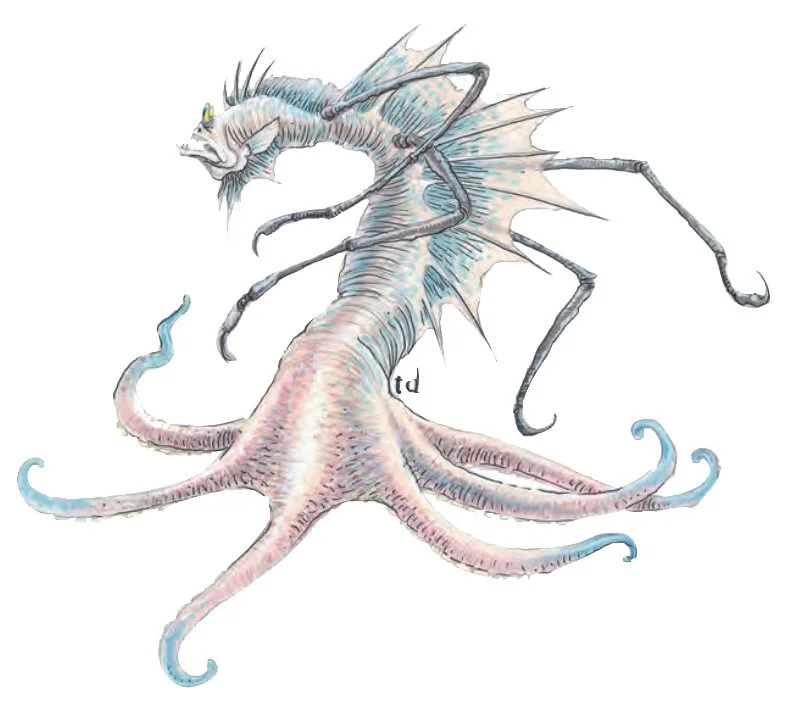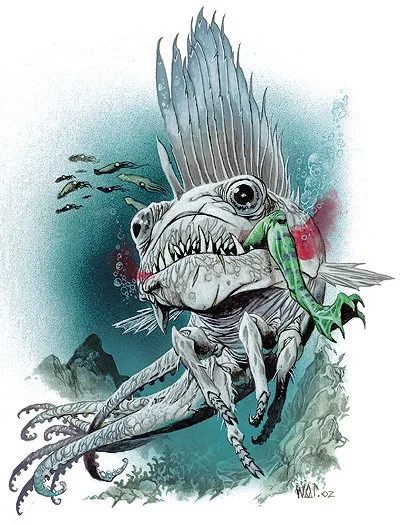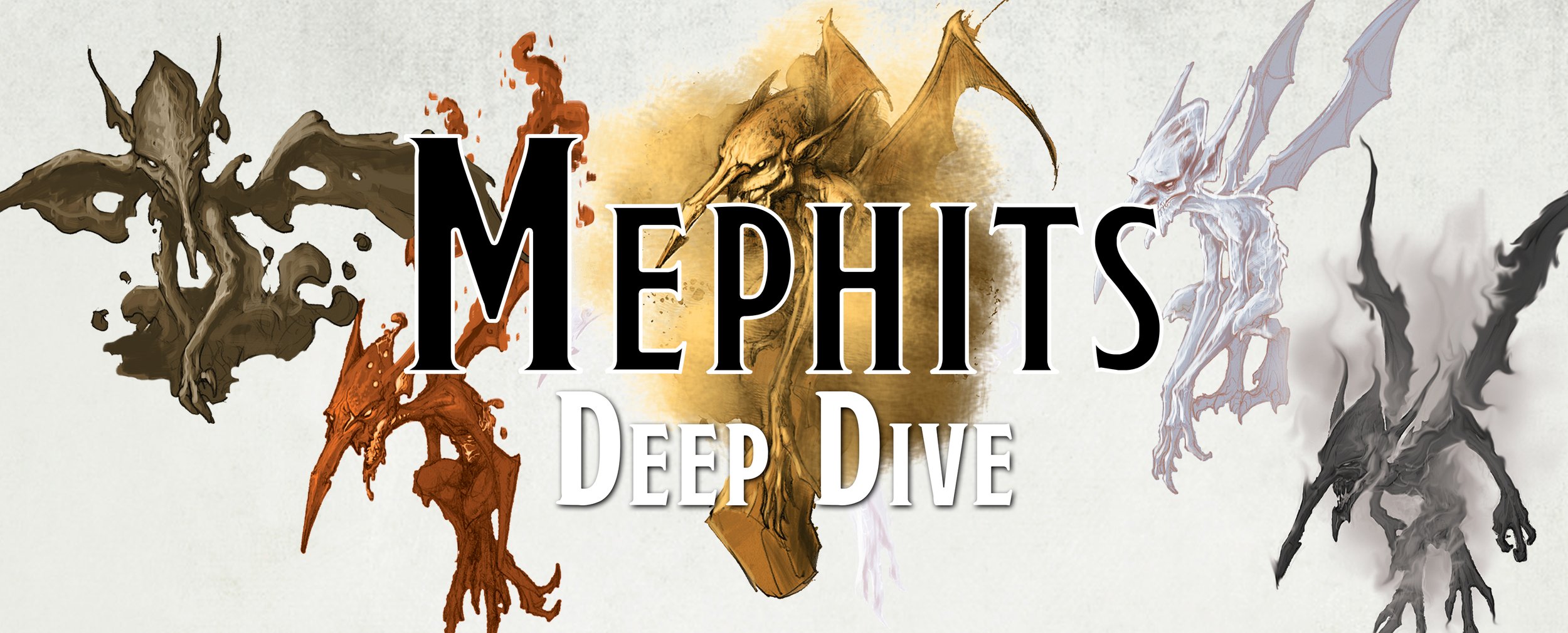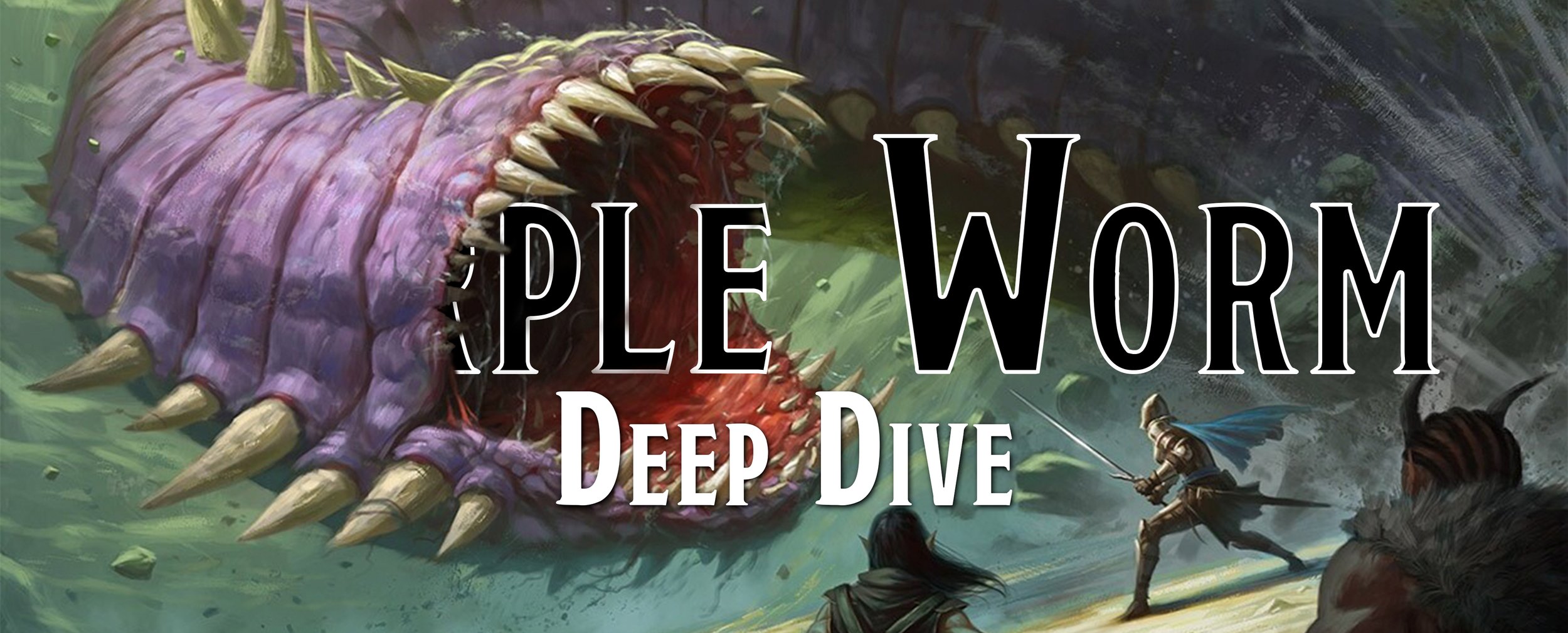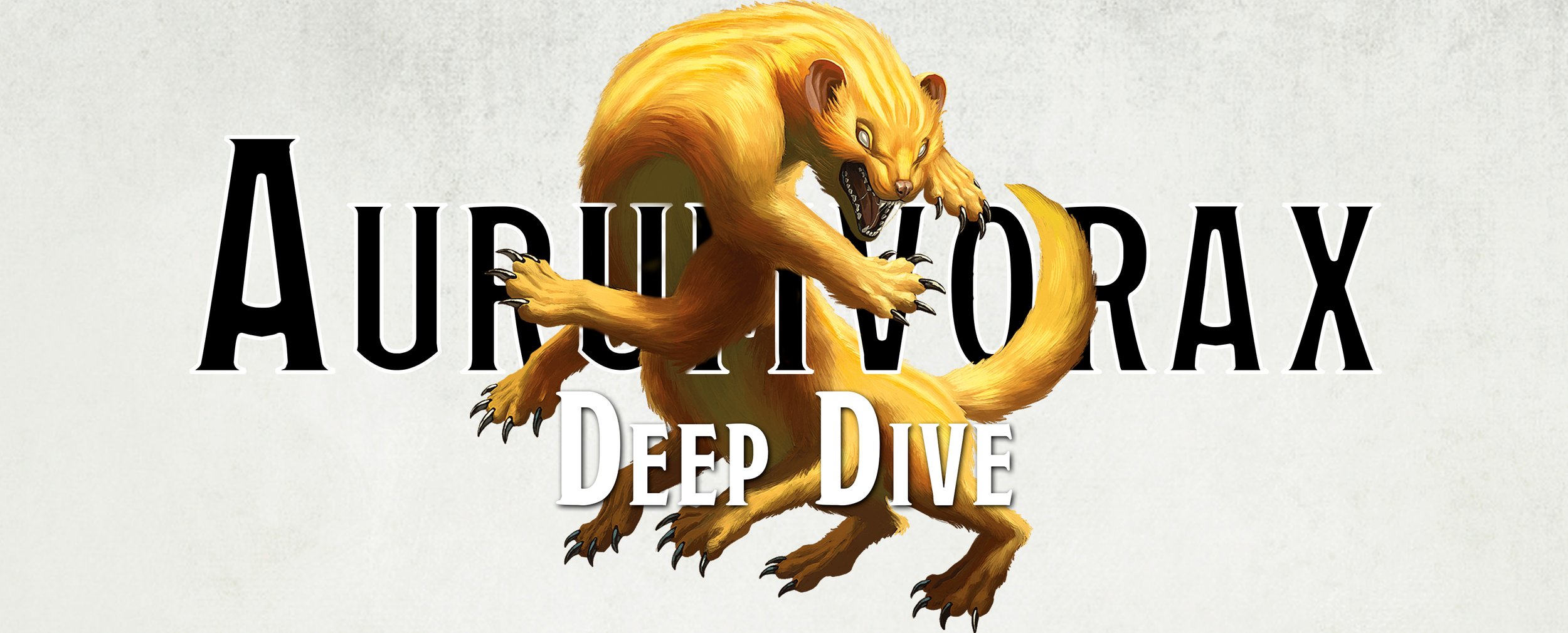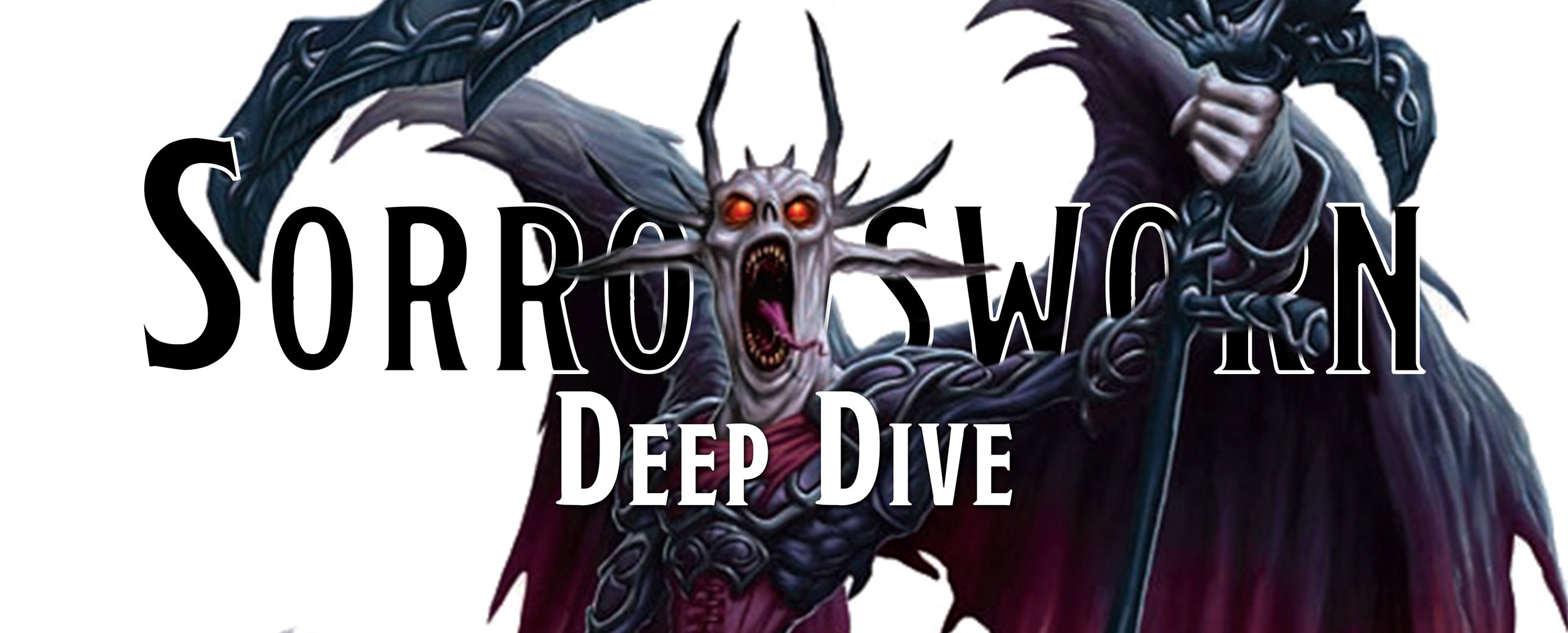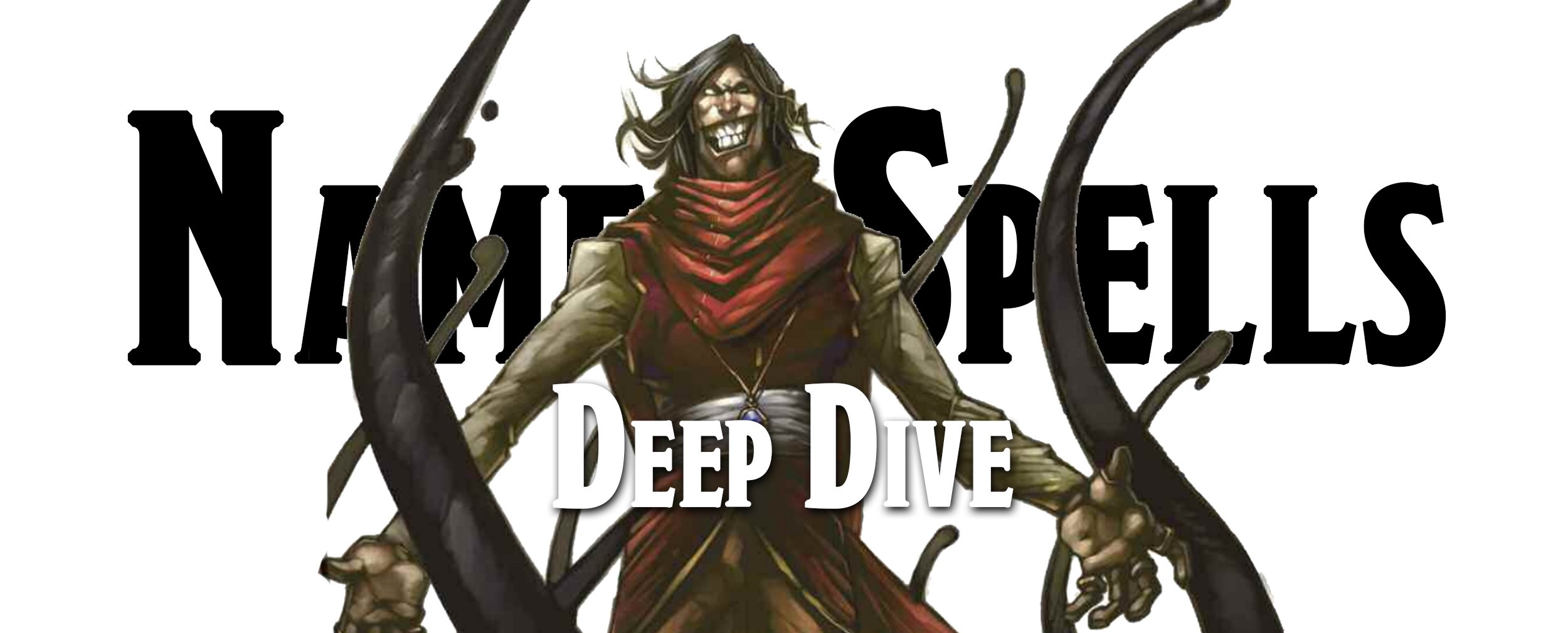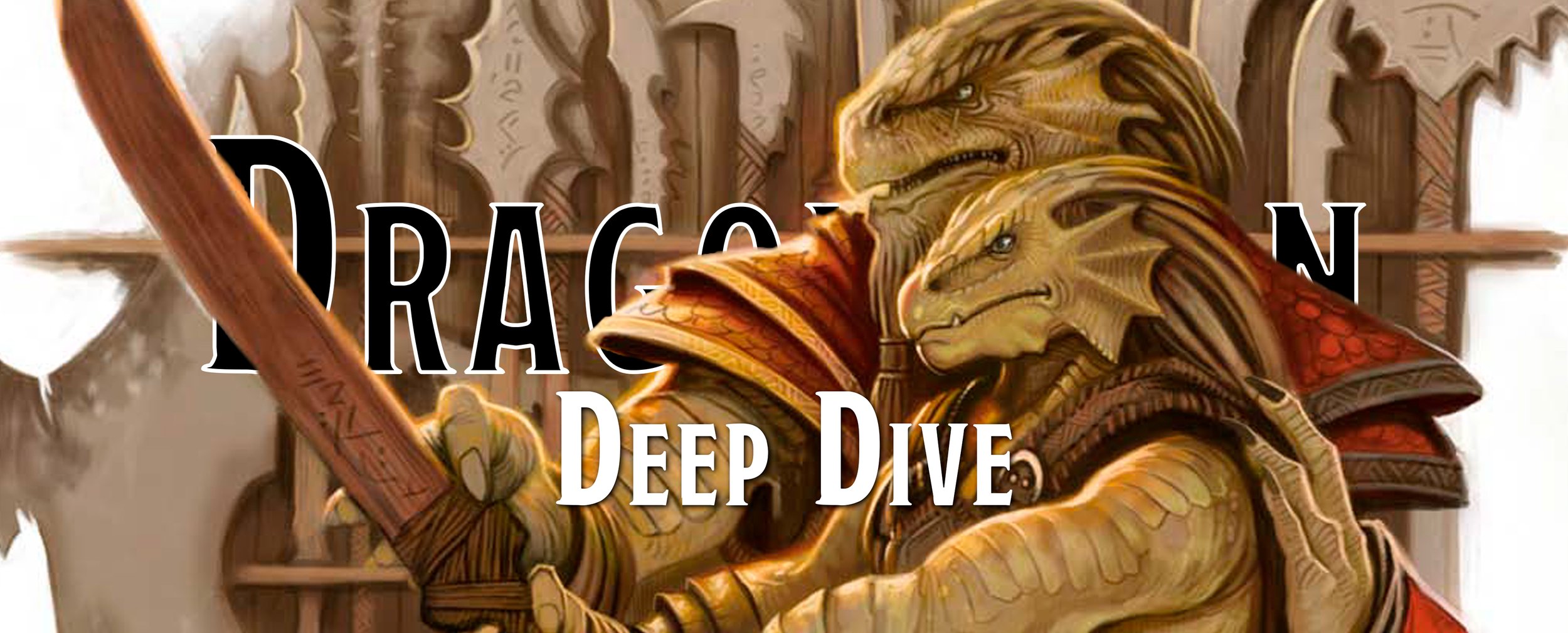Deep Dive - The Morkoth
These strange creatures mostly reside in the darkest parts of our ocean. There are few survivors of Morkoth attacks. Perhaps because Morkoth are intelligent enough to know not to fight against a high-level wizard, or because no one wants to go to the bottom of the ocean. Maybe these octopus-humanoid-crustaceans are the scions of a long-dead deity, or maybe they are just a strange abomination that has learned how to survive in the ocean depths.
OD&D - Morkoth
Number Appearing: 1
Armor Class: 3
Movement: -
Hit Dice: 8
% in Lair: 100%
Type of Treasure: H
Number of Attacks: Special
Damger per Attack: Special
We’re not sure about you, but we were a bit surprised to find the Morkoth first appears in Supplement II - Blackmoor (1975) as a type of water monster. As with all the creatures in this edition, there is very little information on this mysterious creature. What we do know about the Morkoth just leaves us with more questions than what we started with.
These solitary creatures reside deep underwater, inside of a complex tunnel system that have a strange construction. They are spiraling tunnels, that if you look at it from high-above, has a strange hypnotic pull to them. If you are within 240 feet of them while in a dungeon, or 240 yards if you happen to be outside, you’ll feel an irresistible tug, dragging you deeper into the aquatic tunnels. Most likely, you’ll be snorkeling in the waters and notice these strange spiraling tunnels, beckoning you to come forward and explore them.
If you find yourself swimming through the tunnels, searching for the center, we recommend you don’t. In the center of the tunnels is the Morkoth. If you get close to this strange aquatic creature, it will cast a powerful version of the charm spell, luring you even closer to it. We’re confident when we say it doesn’t want to be your bestie but rather murder you in the cold, dark water. Spellcasters had a particularly hard time fighting these creatures. Spells cast at the Morkoth are reflected back at not only the caster, but everyone within a ten feet of the caster.
And that’s almost everything we know about the Morkoth in this edition. We have no idea what it looks like, no idea how it attacks beyond a charm spell, and why it wants to charm you - though we can probably guess on that last one. But, we did say almost. We are given an alternate name for the Morkoth, which is Morlock. There is no information about Morlock, so we have to assume it is referencing the Morlocks of the 1895 novel The Time Machine by H.G. Wells who are subterranean humans who have evolved over thousands of years into monsters who devour the surface humans, the Eloi. This doesn’t make much sense to us, since the Morkoth are aquatic creatures while Morlochs in the novel aren’t, but there you go.
1e - Morkoth
Frequency: Very Rare
No. Appearing: 1
Armor Class: 3
Move: 18”
Hit Dice: 7
% in Lair: 100%
Treasure Type: G
No. of Attacks: 1
Damage/Attack: 1-10
Special Attacks: Hypnosis
Special Defenses: Spell reflection
Magic Resistance: See below
Intelligence: Exceptional
Alignment: Chaotic evil
Size: M
Psionic Ability: Nil
Monster Manual, 1977 TSR Inc.
The ‘Wraith of the Sea’ appears in the Monster Manual (1977), and most of the information remains the same, with some sorely needed extra details. The description describes the Morkoth as a wraith-like creature. One look at the picture in the sourcebook will make you re-evaluate everything you thought about a wraith’s appearance. It kind of looks like it has a squid shaped head and body, with four tentacles, and ribbon-like fins running down the length of its body. We aren’t sure if ‘wraith’ is the right classification since ‘cheesy-70s-art’ is the first thing that comes to our mind.
The Morkoth still lives in its hypnotic tunnel systems designed to lure you and your friends in so the foul creature can feast upon your flesh and bones. Gaze upon the tunnels as you‘re swimming above them, and you’ll find yourself drawn down into them. If you’re a large-sized creature, you won’t get to play in the maze since they are specially designed to keep Large creatures out, maybe the Morkoth is on a diet and doesn’t want a big meal.
At the center of this mesmerizing maze is the Morkoth, or Morlock as they are also known. It will charm you when first encounter it, making it all the easier to bite you with their odd-looking beak. Once you are charmed, the Morkoth will take its time eating you, and you’ll die slowly with a smile on your face. That’s right, it’s unique charm ability means that you won’t ever notice it when it bites you, you’ll just be over for dinner and slowly transform into dinner.
Spell reflection remains the Morkoth’s primary defensive ability, much to the dismay of spell casters everywhere. Our wizard friends now have a chance to blast a Morkoth in the face with a fireball, but it requires some effort and luck. If a spell is cast and dispel magic is cast at the exact same time, there is a 50% chance the spell with penetrate the Morkoth’s defenses. It’s not the best, but some chance is better than none at all. This does mean you need some coordination between your spellcasters, but teamwork makes the dreamwork. And if you fail to be a team, you get to be dinner.
2e - Morkoth
Climate/Terrain: Any Aquatic
Frequency: Very rare
Organization: Solitary
Activity Cycle: Night
Diet: Carnivore
Intelligence: Exceptional (14-15)
Treasure: G in lair
Alignment: Chaotic evil
No. Appearing: 1
Armor Class: 3
Movement: Sw 18
Hit Dice: 7
THAC0: 13
No. of Attacks: 1
Damage/Attack: 1-10
Special Attacks: Hypnosis
Special Defenses: Spell reflection
Magic Resistance: Nil
Size: M (6 ft. long)
Morale: Elite (14)
XP Value: 1,400
Monstrous Compendium Volume 2, 1989 TSR Inc.
We find ourselves pondering the Morkoth’s appearance once again with its introduction in Monstrous Compendium Volume 2 (1989) and the Monstrous Manual (1993). The caveat is that no one really knows what they look like because accounts of their appearance vary. We’re surprised we have any description at all since we assume most people who encounter the Morkoth end up charmed and then eaten. Morkoth, or Morlock as they are still sometimes known as, seem be part humanoid, part octopus, with a splash of insectoid. Or maybe they look like a weird octopus thing with extra tentacles and eyestalks. While no one is sure what they look like, one thing we can all agree upon is they remain bizarre-looking creatures who are as indescribable as they are grotoesque.
Mages claims that the Morkoth is a strange combination of human and squid. That these sea monsters will eat just about anything in the sea, including kua-toa, sharks, and adventurers using their water-breathing potions. They are as savage and cruel as krakens, and as weird and other-worldly as an aboleth.
Of course, we finally get answers to the burning question we have for every monster we learn about. The Morkoth breeds approximately every 10 years, and its one of the rare times they will leave their tunnels. Yup, that’s right-we have to know how they reproduce. This trip that a Morkoth takes is typically short-lived, for once they mate, the male returns home, and the female buries up to 25 eggs in the ocean floor. Males can live up to 100 years old, while females die right after laying their eggs because evolution has never been nice to females when it comes to babies.
Monstrous Manual, 1993 TSR Inc. / Tony DiTerlizzi
The babies then hatch after a few months and attempt to make their way. Few will survive for more than a few months, but if they can make it to six months, they are old enough to defend themselves. By the time they reach five years, they are completely mature and have begun setting up their lair where they can hypnotize their prey and devour even the toughest of adventurers. They then get to travel the oceans, make more babies, and then head back to their solitary life, unless they are a female, in which case they get to die.
Just like before, the Morkoth’s lair still hypnotizes and draws in victims. If you get pulled into these tunnels, you’ll stumble upon the Morkoth who attempts to befuddle your mind with a charm spell and then uses its beak to devour you. If you attempt to defend your self with magic, while they are still like rubber. Spells cast at them, bounce off of them, and head straight back to you. That 50% chance negation chance exists if dispel magic is cast, but let’s be realistic. Most players aren’t coordinated enough to pull that off.
In case it hasn’t been clear yet, the sourcebook spells it out for us now. Morkoths are as evil as they are feared. They are the bane of almost all underwater creatures in the deep dark sea. They will sometimes team up with krakens, sahuagin, and other aquatic creatures to further their plans, like attracting more creautres to devour. Anyone stupid enough to try and join forces with the Morkoth should be prepared to be betrayed, and deception is what the Morkoth values above all else. When they do need to deal with other creatures, they will use the gold and magic items they have stripped from your dead body to barter with. The Morkoth have no need for such trivial baubles and only keep it around because other people seem to like it so much.
In Sea of the Fallen Star (1999), the Morkoth is discussed in regards to their place within the Forgotten Realms Campaign Setting. There is little new information here, but you can glean some interesting background tidbits. Plus, we get a detailed description of their appearance, at least, more than what we have gotten so far. They have purple to black skin, and the tips of their fins sparkle silver in the depths of the ocean. A Morkoth’s head is shaped closer to a locathah than a human, and its beak is closer to that of an octopus or kraken than a squid.
Most interesting is how you can tell where the Morkoth rank in their society by what kind of forelimbs they have. There are three different types: human-like arms and hands, claws and pincer limbs, and flexible tentacles. Two human-like limbs with at least three fingers on each hand means they can cast spells and high-up within the Morkoth societal structure. Pincers and claws make good weapons. Therefore, those with such forearms become members of the military. For those unfortunate aberrations with tentacles, they are doomed to the underclass of society.
3e - Morkoth
Medium-Size Abberation (Aquatic)
Hit Dice: 7d8+7 (38 hp)
Initiative: +6
Speed: Swim 50 ft.
Armor Class: 18 (+2 Dex, +6 natural), touch 12, flat-footed 16
Attacks: Bite +4 melee
Damage: Bite 1d8–1
Face/Reach: 5 ft. by 5 ft./5 ft.
Special Attacks: Hypnosis
Special Qualities: Darkvision 60 ft., spell reflection
Saves: Fortitude +3, Reflex +4, Will +8
Abilities: Str 8, Dex14, Con 13, Int 16, Wis 17, Cha 13
Skills: Hide +14, Knowledge (arcana) +10, Listen +13, Spellcraft +10, Spot +13, Swim +7
Feats: Blind-Fight, Dodge, Improved Initiative, Skill Focus (Hide)
Climate/Terrain: Any aquatic
Organization: Solitary
Challenge Rating: 5
Treasure: Standard
Alignment: Always Chaotic Evil
Advancement: 8–14 HD (Medium-size); 15–21 HD (Large)
Monster Manual II, 2001 Wizards of the Coast / Wayne Reynolds
Found in the Monster Manual II (2001), the Morkoth undergoes practically no changes in this edition. In fact, the changes are almost exclusively to it’s monstrous appearance. The top half of this sea monster looks like a deep-sea fish with bulging eyes like a guppy. In addition, it has protruding teeth and a sail-esque fin. Its lower body is closer to an octopus with eight tentacles and four crustacean legs., like a lobster. We can understand why it’s taken so long for people to describe this creature because it looks like what happens when an ocean of fish is dropped into a blender, resulting in a Morkoth swimming out.
Special attention is given to the Morkoth’s tunnels. The tunnels are small and narrow, allowing only one medium-sized creature to traverse a single 5-foot section at a time. There are some basic guidelines provided for a Game Master to map out a tunnel system in case players want to attempt to rescue their soon-to-be-eaten friend. We don’t see that working out well for the player’s characters and suggest they start suggesting new character classes that may have a a bit more Wisdom, like a cleric.
While there isn’t much else to say about the Morkoth, they do briefly appear in Stormwrack (2005). This sourcebook lets us know that the Morkoth don’t only live in the ocean of the Material Plane. they also stalk the sea floors of the Plane of Water as well. Just another reason why one should never go swimming in the elemental planes.
5e - Morkoth
Large Aberration, Typically Chaotic Evil
Armor Class 17 (natural armor)
Hit Points 130 (20d8+40)
Speed 25 ft., swim 50 ft.
Str 14 (+2) Dex 14 (+2) Con 14 (+2) Int 20 (+5) Wis 15 (+2) Cha 13 (+1)
Saving Throws Dex +6, Int +9, Wis +6
Skills Arcana +9, History +9, Perception +10, Stealth +6
Damage Resistances bludgeoning, piercing, and slashing from nonmagical attacks
Senses blindsight 30 ft., darkvision 120 ft., passive Perception 20
Languages telepathy 120 ft.
Challenge 11 (7,200 XP)
Amphibious. The morkoth can breathe air and water.
Spellcasting. The morkoth is an 11th-level spellcaster. Its spellcasting ability is Intelligence (save DC 17, +9 to hit with spell attacks). The morkoth has the following wizard spells prepared: Cantrips (at will): acid splash, mage hand, mending, ray of frost, shocking grasp; 1st level (4 slots): detect magic, identify, shield, witch bolt; 2nd level (3 slots): darkness, detect thoughts, shatter; 3rd level (3 slots): dispel magic, lightning bolt, sending; 4th level (3 slots): dimension door, Evard’s black tentacles; 5th level (3 slots): geas, scrying; 6th level (1 slot): chain lightning
Multiattack. The morkoth makes three attacks: two with its bite and one with its tentacles or three with its bite.
Bite. Melee Weapon Attack: +6 to hit, reach 5 ft., one target. Hit: 9 (2d6 + 2) slashing damage.
Tentacles. Melee Weapon Attack: +6 to hit, reach 15 ft., one target. Hit: 15 (3d8 + 2) bludgeoning damage, and the target is grappled (escape DC 14) if it is a Large or smaller creature. Until this grapple ends, the target is restrained and takes 15 (3d8 + 2) bludgeoning damage at the start of each of the morkoth’s turns, and the morkoth can’t use its tentacles on another target.
Hypnosis. The morkoth projects a 30-foot cone of magical energy. Each creature in that area must make a DC 17 Wisdom saving throw. On a failed save, the creature is charmed by the morkoth for 1 minute. While charmed in this way, the target tries to get as close to the morkoth as possible, using its actions to Dash until it is within 5 feet of the morkoth. A charmed target can repeat the saving throw at the end of each of its turns and whenever it takes damage, ending the effect on itself on a success. If a creature’s saving throw is successful or the effect ends for it, the creature has advantage on saving throws against the morkoth’s Hypnosis for 24 hours.
Spell Reflection. If the morkoth makes a successful saving throw against a spell, or a spell attack misses it, the morkoth can choose another creature (including the spellcaster) it can see within 120 feet of it. The spell targets the chosen creature instead of the morkoth. If the spell forced a saving throw, the chosen creature makes its own save. If the spell was an attack, the attack roll is rerolled against the chosen creature.
Volo’s Guide to Monsters, 2016 Wizards of the Coast
After being ignored for an edition, the Morkoth appears in Volo’s Guide to Monsters (2016) and later revised in the Mordenkainen Presents: Monsters of the Multiverse (2023). In its glorious return, the Morkoth becomes an entirely new creature, almost unrecognizable from the underwater squid-humanoids-crustacean we’ve grown to know and fear. We may always groan about the lack of lore in this edition or its weird changes, but we probably can’t do the same for the Morkoth.
What are these changes? The Morkoth is no longer an ocean-floor bottom dweller feasting on sahuagin, kuo-toa, and other deep ocean creatures. Now they are ancient travelers of the multiverse, scouring the planes in search of rare and unusual treasures. More than that, the Mortkoth is an island in and of itself, literally. The islands they live on were created from the husk of a long-dead god, while the Morkoth themselves were bits of the dead god that were imbued with celestial matter and brought to life.
The Morkoth floats throughout the multiverse on these semi-tropical islands, forever under the glow of twilight. The islands are a hoarder’s paradise, littered with treasure, garbage, and all manner of living creatures from throughout space and time. Unlike the previous editions, these new Morkoths have no issue taking captives. To them, these prisoners are part of its collection of wealth, making the island part home, part treasure hoard, and part zoo. Where the islands go is completely up to the Morkoth that owns it, and it can travel anywhere it pleases, from the Astral Plane to the Elemental Chaos, and from the Nine Hells to the Seven Mounting Heavens of Celestia.
In the center of the island is the tunnel system we remember from before. Most of a Morkoth’s lair is underwater, paying homage to the creature’s oceanic roots. In the center is the Mortkoth and their most valued treasures, and it is here you can find the pearly matter that gave the Morkoth life. Of course, any good bad guy with a cool lair has lair actions, and the Morkoth is no exception. When fighting in its tunnel systems, the Morkoth can use its Hypnosis action as well as cast darkness, dispel magic, or misty step without using a precious spell slot.
Of course, the entire island comes with its own powers too. Our hypnotic friend knows when you arrive and can locate you whenever it wants. You’ll find yourself losing stuff on the island too, as your disorientation will make you forget where you put even your most valued possessions. If you don’t find it quickly, it will end up with the Morkoth and their treasure pile. Don’t worry. You’ll stop misplacing things after you’ve been there a year, which probably means you are part of the zoo.
The entrances to the lair have a special Morkoth ‘trap’ on them so that when you are near one, you’ll feel the pull of the tunnels and want to go in deeper. You know, towards the center where the Morkoth awaits. Finally, remember how we said the majority of the lair was underwater? Well, the Morkoth can change that air in a minute flat. So one moment, you could be in breathable, crystal clear water, the next, choking on the silt-filled salt water that now surrounds you, while a horrific octopus-aberration is chowing down on your head.
No matter what you call them - sea wraith, squid face, octo-humanoid, scary underwater monster - the Morkoth is not a creature to be taken lightly. You may think you’ve found your new best friend when you first see them, but it won’t take long to realize that their invitation for dinner puts you as the main course.
If you enjoy our Deep Dive series, consider
supporting us on Patreon and following us on Twitter!


